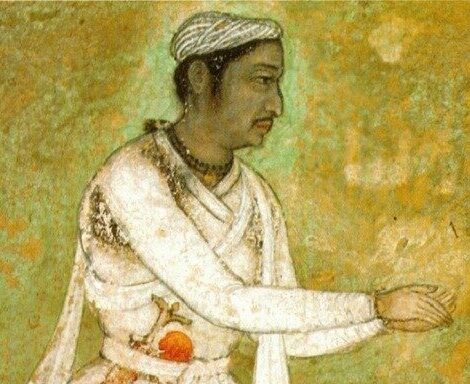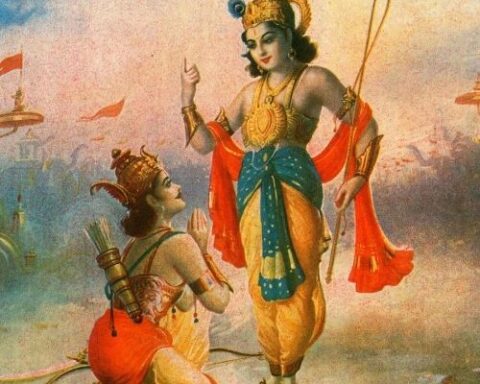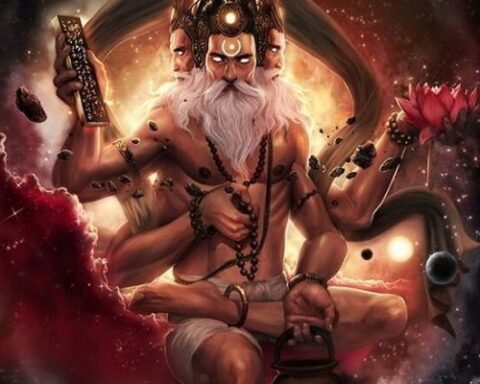
Tansen the magical musician who can bring fire or rain from his singing. He was one of the “Navratna” nine gems at the court of the Mughal Emperor Akbar. Tansen was born in Gwalior as a son of Mukund Misra, who was a poet. He first served as a court musician of the Raja Ramchandra Singh of Rewa and then of the emperor Akbar.
In this article, I will unfold the amazing facts about the Legendary Tansen so let’s get started –
Early Life and Birth –
Tansen was born in Behata village in Gwalior, his birth name was Ramtanu. It was the ruler of the state of Gwalior who conferred upon him the honorary title of ‘Tansen’.
History says that he started showing his passion as a musician when he was only 6 years of age.
He was the only child in the family, Tansen was a very notorious child he often ran from his home to the jungle but he was very talented as well as later in the forest he learnt how to imitate the calls of birds and lions.
Meeting with his Guru –
A Legendary singer named Swami Haridas was once travelling through the forest with his disciples. Tired, the group settled down to rest in a shady grove Tansen saw them.
“Stranger in the forest!” he said to himself. ‘It will be fun to frighten them’. He hid behind a tree and roared like a tiger. The little group of travellers scattered in fear but Swami Haridas called them. “Don’t be afraid,” he said. “Tigers are not always dangerous. Let’s look for this one”.
Suddenly, one of his men saw a small boy hiding behind a tree. There are no tigers here, master, he said. Only this naughty boy.
Swami Haridas didn’t punish him. He went to Tansen’s father and said, “Your son is very naughty but he is immensely talented as well. I think I can make him a good singer.
Tansen learnt music from Swami Haridas for eleven years and became a great singer.
Joining the Mughal Court –
Tansen spent most of his adult life and career in the court and under the patronage of the king of Gwalior named Raja Ramchandra Singh.
His musical abilities got him widespread fame and followership. He became a very close confidant of Raja Ramchandra Singh and they used to create music together.
The reputation Tansen had earned brought him to the attention of Mughal Emperor Akbar. Akbar sent several messengers to the Gwalior king and requested him to send Tansen so that he could join the musicians at the Mughal court.
Although Tansen did not want to leave, Raja Ramchandra encouraged him so that he could gain a wider audience. In 1562, at the age of sixty, Tansen arrived for the first time in Akbar’s court and later he became a part of Akbar’s Navratnas.
Miracles performed by Miyan Tansen –
Tansen performed several miraculous acts in Akbar’s court.
A lot of Akbar’s courtiers became jealous of Tansen’s privileges. They schemed to burn Tansen while he sang raga Deepak.
This raga when sung caused fire in the area of performance. The courtiers spread the word that Tansen can make Diya light up with his singing. Akbar heard about this talent and asked Tansen to perform the feat.
Tansen was afraid, but could not disobey the king. He asked for some time to prepare himself. Tansen knew that if he sang raga Deepak – the raga of fire, the heat it gives off will not only set the lamps alight, but it will also burn him to ashes. Then he had an idea. He taught raga Megha Malhar – the raga of rain, to his daughter. If sung properly, this raga could bring rain.
On the day of his performance, Tansen started singing raga Deepak. Soon the temperature of the hall started rising. Suddenly, the hall started to lit with countless diyas.
As the music continued, everything in the surrounding started burning. In the meantime, Tansen’s daughter started singing raga Megh Malhar which brought clouds and rains all over to douse off the fire. Thus, Tansen saved.
Another miracle happened when Tansen used his ability to bring a wild elephant to listen with attention (or to talk their language). Once, a wild white elephant was captured, but it was fierce and could not be tamed. Finally, Tansen sang to the elephant and the elephant calmed down and the emperor was able to ride him.
Tansen’s Contribution to the Music –
Tansen composed several ragas including Bhairav, DarbariTodi, DarbariKanada, Malhar, Sarang and Rageshwari. These are all considered as the foundation of classical music. Tansen is considered the founder of Hindustani classical music.
In fact, every school of music that exists today in India tries to trace its origin back to him. The Dhrupad style of music is likely to have been started by him and his guru. He is even believed to have classified ragas, making them simpler and easier to understand. His contribution to the world of music is priceless and hence he is still worshipped by leading singers and composers across the world.
Tansen Samaroh –
A national music festival is known as ‘Tansen Samaroh’ is held every year in December, near the tomb of Tansen at Behat as a mark of respect to his memory. The Tansen Samman or Tansen award is given to exponents in Indian classical music.
Death of the Legend –
The year of the death of Tansen is unclear. According to one version, written by Islamic historians, Tansen died in 1586 in Delhi, and that Akbar and much of his court attended the funeral procession which was completed according to Muslim customs. Tansen remains were buried in the mausoleum complex of his Sufi master Shaikh Muhammad Ghaus in Gwalior.
Other versions, written by Hindu historians say that he died In Agra 26 April 1589 as the date of his death and that his funeral observed mostly Hindu customs.
The legend like Tansen takes birth in Centuries and the kind of bliss he brought in his music was way ahead of this time. We must take inspiration from him and take note that whatever we do in our lives if done passionately with sole dedication anything or everything is possible.




